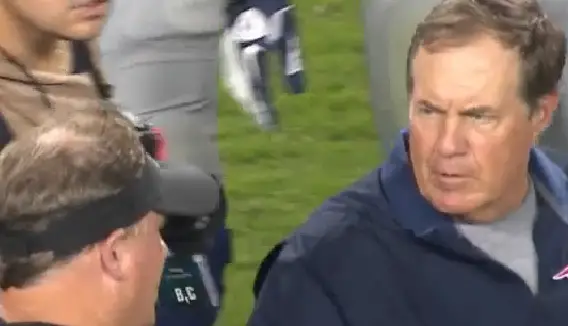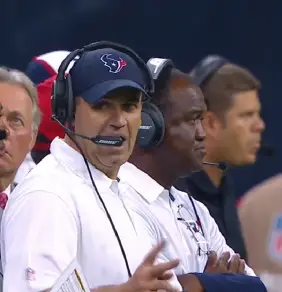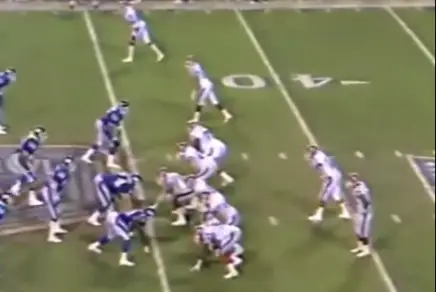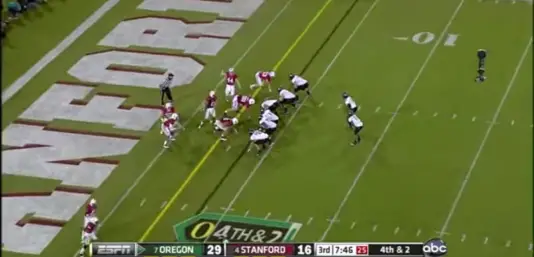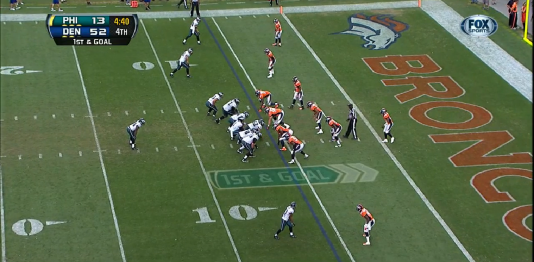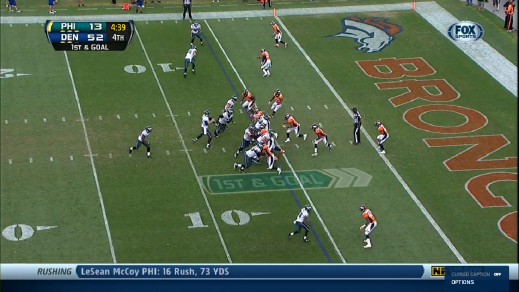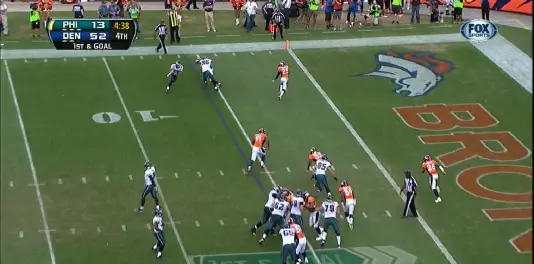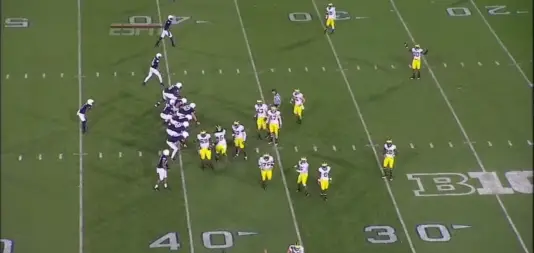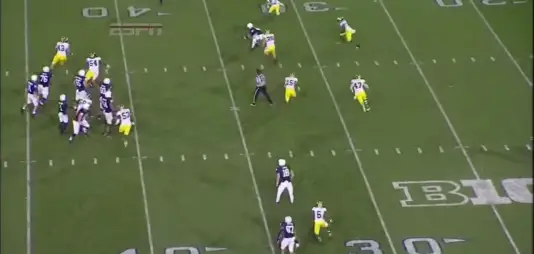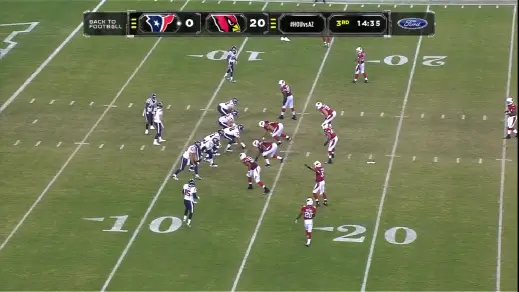A pickup basketball game between the football coaches of the University of New Hampshire and Brown University in the 1990s was the first of many meetings between two future NFL head coaches. Then-New Hampshire running backs coach Chip Kelly and a Brown assistant coach named Bill O’Brien exchanged ideas about X’s and O’s on the first of many occasions.
O’Brien was impressed enough by Kelly to ask the renowned Oregon head coach for advice in his tenure as the New England Patriots’ offensive coordinator. He even persuaded Patriots head coach Bill Belichick to meet with him. After three meetings with Kelly, the Patriots implemented a lethal, up-tempo offense.
Today, Belichick remains the Patriots’ head coach, Kelly is the Philadelphia Eagles’ head coach, and O’Brien is in his first season as the Houston Texans’ head coach. With each of these men at the helm of an NFL team, football will likely be shaped by their common ideas to an even greater extent than we have seen so far.
The number of NFL coaching staffs that use up-tempo throughout games is growing. The Eagles, Denver Broncos, Baltimore Ravens, Buffalo Bills and Pittsburgh Steelers used the no-huddle more than 20% of the time last season. The Detroit Lions, Miami Dolphins and San Diego Chargers plan to use the no-huddle regularly this season.
The notion that the up-tempo is just some gimmicky college tactic is blatantly false. Sam Wyche, former head coach of the Cincinnati Bengals, was the first to regularly use the no-huddle and he took his team to Super Bowl XXIII. Marv Levy coached the Buffalo Bills to four consecutive Super Bowl appearances, using a no-huddle offense led by quarterback Jim Kelly.
Another misconception about the no-huddle is that the offense must operate superfast every play. Chris Brown wrote an excellent piece for Grantland which describes the varying tempos Oregon uses:
“The Ducks use plenty of their superfast tempo, but they actually have three settings: red light (slow, quarterback looks to sideline for guidance, while the coach can signal in a new play), yellow light (medium speed, quarterback calls the play and can make his own audibles at the line, including various check-with-me plays), and green light (superfast).”
Kelly takes the no-huddle a step further by debunking the notion that players needed coaches to use lengthy sideline calls or wristbands for communication.
When Kelly met with the Patriots’ coaches, he informed them that he used a no-huddle relying on one word to indicate every part of a play. At Oregon, Kelly used a placard with four pictures to signify plays, snap counts, formations, motions, routes or nothing at all. In Philadelphia, he just uses one picture per placard. This video clip provides an overview of Oregon’s placards:
Belichick and O’Brien adopted Kelly’s method of using one word to communicate with QB Tom Brady in 2011, but they lacked the sense of humor to use amusing placards.
Kelly, O’Brien and Belichick each depend on versatile skill players, particularly tight ends, to line up in a variety of positions throughout the drive, while they use their up-tempo offense. Tight ends must be capable in-line blockers and route runners, H-backs, slot receivers, wide receivers and occasionally running backs. All on the same drive, if necessary.
An equally crucial tenet of the no-huddle is that quarterbacks must excel at making correct pre-snap reads. Some of Oregon’s best plays came out of the no-huddle because the quarterback caught the defense off guard and made a superb pre-snap read. This FishDuck.com video shows a few examples:
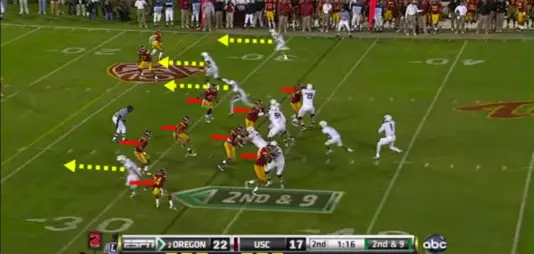
Oregon quarterback Darron Thomas catches USC with eight defenders in the box, while Kelly calls Four Verticals with play action.
Eagles quarterback Nick Foles thrived in Kelly’s no-huddle offense last season because of excellent pre-snap reads:
This touchdown shows the importance of a “fleet-of-mind” quarterback in running the no-huddle.
Brady’s aptitude for pre-snap reads made him a natural fit to execute this offense under O’Brien. The up-tempo not only exhausted inadequately prepared defensive players and prevented substitutions, but it also gave him more time to read the defense and adjust the plays accordingly.
Belichick and current offensive coordinator Josh McDaniels retained the no-huddle as a staple of the Patriots’ offense in 2012, when O’Brien became Penn State’s head coach. The Patriots used the no-huddle less frequently in 2013 due to a shortage of experienced receivers, but they still have it available as a lethal weapon. Here is a video which illustrates the blistering speed of the Patriots’ offense:
In 2012, O’Brien joined the ranks of college head coaches who favored the up-tempo style. Penn State was 23rd and 33rd for team plays per game in 2012 and 2013, respectively. This was a dramatic transformation from Joe Paterno’s offense, which was 73rd and 80th in that category during the staff’s final two seasons. Quarterback Matt McGloin had the best season of his college career in an offense that capitalized on his prowess at making pre-snap reads. McGloin’s successor, Christian Hackenberg, had an outstanding freshman campaign, partly because O’Brien gave him tools to succeed such as the no-huddle, “NASCAR offense” on plays like this:
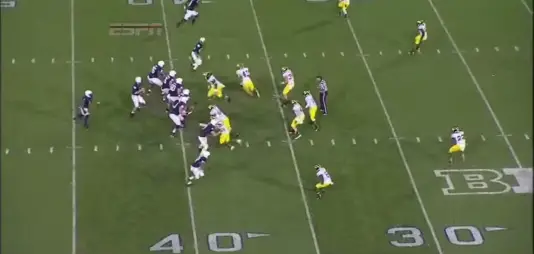
Hackenberg sees a one-on-one matchup with soft coverage against receiver Brandon Felder, who is running a curl route.
Meanwhile, nearly 200 miles southeast of State College, Pa., Kelly’s Eagles led the NFL in using the no-huddle on 68% of their plays. They became the first team in the NFL since the 1991 Bills to lead the league in rushing, while finishing last in time of possession.
O’Brien hopes to replicate Kelly’s success in transitioning from the NCAA to the NFL. He has installed the no-huddle during training camp and used it sparingly in preseason games. The no-huddle is not the be-all, end-all ingredient for his offense, as it is for Kelly’s, but it is a vital tool in the toolbox he took with him to Houston.
A showdown between Kelly and O’Brien is scheduled this season. The Eagles travel to Houston for a 1 p.m. game on Sunday, November 2nd.
Belichick has observed O’Brien and Kelly’s past successes, and he understands college football is transforming the pro game. He has tried to stay ahead of the curve by listening to innovative college coaches. Perhaps he anticipates a showdown between himself and one of his old allies with the Vince Lombardi Trophy at stake.
Top photo from video
Joe Kearns is a senior at the Pennsylvania State University majoring in Economics. He intends to pursue a career in the banking and financial services industries, but is also a lifelong diehard Philadelphia Eagles fan who enjoys analyzing college and pro football film as a hobby. Along with being a fan, Joe’s football knowledge comes from his days as a center, defensive tackle, and long snapper for his high school in Mt. Lebanon, Pa. Though he is a Nittany Lion, he has taken a great interest in the Oregon football team since Chip Kelly became the Eagles head coach. He loves pancakes ( and not just the breakfast food).

